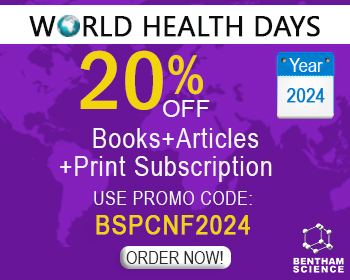Abstract
Adverse drug events have been a long-standing concern for the wide-ranging harms to public health, and the substantial disease burden. The key to diminish or eliminate the impacts is to build a comprehensive pharmacovigilance system. Application of the “big data” approach has been proved to assist the detection of adverse drug events by involving previously unavailable data sources and promoting health information exchange. Even though challenges and potential risks still remain. The lack of effective privacy-preserving measures in the flow of medical data is the most important Accepted: one, where urgent actions are required to prevent the threats and facilitate the construction of pharmacovigilance systems. Several privacy protection methods are reviewed in this article, which may be helpful to break the barrier.
Keywords: Drug use, pharmacovigilance, data sharing, data privacy, ethics, policy, social netowork.
[http://dx.doi.org/10.1002/pds.1351] [PMID: 17154346]
[http://dx.doi.org/10.4103/0250-474X.102548] [PMID: 23204627]
[http://dx.doi.org/10.2165/11586870-000000000-00000] [PMID: 21250763]
[http://dx.doi.org/10.1371/journal.pone.0047062] [PMID: 23071711]
[http://dx.doi.org/10.18433/J37K5W]
[http://dx.doi.org/10.1345/aph.1A484] [PMID: 12398558]
[PMID: 17207423]
[http://dx.doi.org/10.4103/0253-7613.129303] [PMID: 24741184]
[http://dx.doi.org/10.1001/jama.279.15.1200] [PMID: 9555760]
[http://dx.doi.org/10.18433/J35C7Z] [PMID: 20067703]
[http://dx.doi.org/10.1016/j.tips.2013.01.006] [PMID: 23414686]
[http://dx.doi.org/10.1002/pds.1641] [PMID: 18763247]
[http://dx.doi.org/10.1093/bib/bbx010] [PMID: 28334070]
[http://dx.doi.org/10.2337/diaspect.19.4.202]
[http://dx.doi.org/10.1007/s40264-013-0018-x] [PMID: 23377696]
[http://dx.doi.org/10.1161/01.STR.0000075293.45936.FA] [PMID: 12791938]
[http://dx.doi.org/10.1136/bmj.l4217] [PMID: 31292127]
[http://dx.doi.org/10.1142/9789814749411_0045] [PMID: 26776212]
[http://dx.doi.org/10.1371/journal.pmed.1001936] [PMID: 26731493]
[http://dx.doi.org/10.1136/jamia.2009.000026] [PMID: 20190059]
[http://dx.doi.org/10.1371/journal.pone.0028071] [PMID: 22164229]
[http://dx.doi.org/10.1016/j.clinthera.2016.11.009] [PMID: 27914633]
[PMID: 29896033]
[http://dx.doi.org/10.1093/jamia/ocv063] [PMID: 26209436]
[http://dx.doi.org/10.1002/cpt.302] [PMID: 26575203]
[http://dx.doi.org/10.1136/amiajnl-2013-001612] [PMID: 24158091]
[PMID: 25991101]
[http://dx.doi.org/10.1016/j.jbi.2015.05.015] [PMID: 26065982]
[http://dx.doi.org/10.1007/s40264-015-0385-6] [PMID: 26798054]
[http://dx.doi.org/10.1007/s41060-019-00175-3]
[http://dx.doi.org/10.1007/s40290-017-0186-6]
[http://dx.doi.org/10.1111/bcp.12746] [PMID: 26271492]
[http://dx.doi.org/10.1016/j.jbi.2015.10.011] [PMID: 26518315]
[http://dx.doi.org/10.1007/s40264-016-0491-0] [PMID: 28044249]
[http://dx.doi.org/10.1007/s40264-014-0155-x] [PMID: 24777653]
[http://dx.doi.org/10.1136/amiajnl-2012-001482] [PMID: 23467469]
[http://dx.doi.org/10.2196/jmir.2614] [PMID: 23778053]
[http://dx.doi.org/10.1038/clpt.2011.55] [PMID: 21490594]
[http://dx.doi.org/10.1038/sdata.2018.268] [PMID: 30480665]
[http://dx.doi.org/10.1002/9781118479612]
[http://dx.doi.org/10.3389/fgene.2018.00167] [PMID: 29910822]
[http://dx.doi.org/10.4338/ACI-2014-06-RA-0055] [PMID: 25589903]
[http://dx.doi.org/10.1002/sec.1556]
[http://dx.doi.org/10.1517/14740338.2015.1096342] [PMID: 26436834]
[http://dx.doi.org/10.2196/medinform.7744] [PMID: 29653917]
[http://dx.doi.org/10.1186/1471-2105-16-S18-S6] [PMID: 26678650]
[http://dx.doi.org/10.1093/bioinformatics/btw050] [PMID: 27153731]
[http://dx.doi.org/10.1109/TIT.1983.1056621]
[http://dx.doi.org/10.1186/s40246-018-0147-5] [PMID: 29636096]
[http://dx.doi.org/10.1038/nbt.4108] [PMID: 29734293]
[http://dx.doi.org/10.1093/bioinformatics/btaa038] [PMID: 31950974]
[http://dx.doi.org/10.1093/bioinformatics/btw073] [PMID: 26873931]
[http://dx.doi.org/10.1109/FOCS.2007.66]
[http://dx.doi.org/10.1186/s13062-017-0203-4] [PMID: 29409513]
[http://dx.doi.org/10.1093/bioinformatics/btz373] [PMID: 31510659]



























